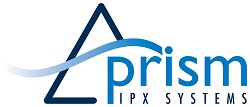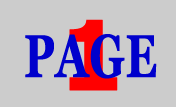Selected portions of the BloostonLaw Telecom Update, a newsletter from the Law Offices of Blooston, Mordkofsky, Dickens, Duffy & Prendergast, LLP are reproduced in this section with the firm's permission. 
The FCC has announced that Austin Schlick will step down as General Counsel, effective mid-June. Sean Lev, currently Deputy General Counsel and Special Advisor to the Chairman, will become General Counsel. The FCC also announced that Rick Kaplan, Chief of the Wireless Telecommunications Bureau, will step down, and that Ruth Milkman, currently Special Counsel to the Chairman for Innovation in Government will return as Bureau Chief, also in mid-June. 
NOI Explores Use Of Aerial Communications In Wake Of Major Disaster Strikes The FCC has adopted a Notice of Inquiry (NOI) to explore the use of Deployable Aerial Communications Architecture (DACA) technologies. At last week’s open meeting, the FCC said DACA technologies are aerial technologies such as unmanned aerial vehicles, weather balloons or existing aircraft that could provide emergency communications during or immediately after a major disaster, when terrestrial communications infrastructures may be damaged or disrupted. “During a disaster, when the terrestrial infrastructure is unavailable, DACA technologies could provide emergency communications to first responders and possibly civilians” said David Furth, Acting Chief of the FCC’s Public Safety and Homeland Security Bureau. “Ideally, DACA technologies could be deployed rapidly to the scene of a major disaster and enable immediate and continuous communications using the devices that first responders and other users carry with them everyday until the infrastructure is restored.” The FCC noted that there remains a gap during the first 72 hours after a catastrophic event when communications may be disrupted or completely disabled due to damaged facilities, widespread power outages, and lack of access by restoration crews into the affected area. DACA could provide temporary emergency communications to emergency management officials, first responders, critical infrastructure industry personnel, and the public to use their day-to-day communications devices seamlessly during and immediately after an emergency. Most significant, the use of DACA to ensure quick restoration of emergency communications could save lives.
In its Notice of Inquiry , the Commission seeks comment on: - the deployment and operation of DACA technologies;
- the associated costs and benefits;
- coordinating and managing the use of DACA technologies; and
- authorizing the use of spectrum to support their operation.
The Notice of Inquiry also addresses DACA system performance issues, including questions on coverage area, capacity, interference mitigation, and interoperability. Comments in this PS Docket No. 11-15 proceeding will be due 40 days from publication in the Federal Register, and reply comments are due 20 days thereafter. 
COMMENT SOUGHT ON PRIVACY, SEURITY OF INFORMATION STORED ON MOBILE DEVICES: The FCC’s Wireline Competition Bureau (WCB), Wireless Telecommunications Bureau (WTB), and Office of General Counsel have issued a Public Notice, jointly soliciting comments regarding the privacy and data-security practices of mobile wireless service providers with respect to customer information stored on their users’ mobile communications devices, and the application of existing privacy and security requirements to that information. The FCC noted that since it last solicited public input on this question five years ago, technologies and business practices have evolved dramatically. It noted that the devices consumers use to access mobile wireless networks have become more sophisticated and powerful, and their expanded capabilities have at times been used by wireless providers to collect information about particular customers’ use of the network — sometimes, it appears, without informing the customer. Service providers’ collection and use of this information may be a legitimate and effective way to improve the quality of wireless services. At the same time, the collection, transmission, and storage of this customer-specific network information raise new privacy and security concerns, the FCC said. As a result, the Commission now seeks to refresh the record in this docket concerning the practices of mobile wireless service providers with respect to information stored on their customers’ mobile communications devices. How have those practices evolved? Are consumers given meaningful notice and choice with respect to service providers’ collection of usage-related information on their devices? Do current practices serve the needs of service providers and consumers, and in what ways? Do current practices raise concerns with respect to consumer privacy and data security? How are the risks created by these practices similar to or different from those that historically have been addressed under the Commission’s CPNI rules? Have these practices created actual data-security vulnerabilities? Should privacy and data security be greater considerations in the design of software for mobile devices, and, if so, should the Commission take any steps to encourage such privacy by design? What role can disclosure of service providers’ practices to wireless consumers play? To what extent should consumers bear responsibility for the privacy and security of data in their custody or control? Comments in this CC Docket No. 96-115 proceeding will be due 30 days after publication in the Federal Register, and replies will be due 15 days thereafter. 
VITAL MEETINGS & DEADLINES May 31 – FCC Form 395, Employment Report, is due. May 31 – Deadline for comments on NPRM proposing 2012 regulatory fees (MD Docket No. 12-116). June 1 – Effective date of Lifeline Reform Order Section 54.409 (consumer qualification for Lifeline) (WC Docket Nos. 11-42, 03-109, 12-23, and CC Docket No. 96-45). June 1 – Deadline for comments on NPRM promoting interoperability in Lower 700 MHz band (WT Docket No. 12-69). June 1 – Deadline for comments on AT&T’s request to make 800 MHz cellular base station rules consistent with other mobile broadband services (RM-11660). June 4 – Deadline for oppositions to petitions to deny transfer of licenses from E.N.M.R.-Plateau to Verizon Wireless (ULS File Nos. 0005034870, 0005034877, 0005063051 and/or ITC-ASG-20120420-00105). June 5 – Deadline for reply comments on short-form Tariff Review Plans (TRPs) regarding annual access tariffs (WCB/Pricing File No. 12-07). June 7 – Deadline for reply comments on NPRM proposing 2012 regulatory fees (MD Docket No. 12-116). June 7 – Deadline for comments on Satellite Broadcasting & Communications Association’s request to amend exclusive use provision of OTARD rule (MB Docket No. 12-21). June 8 – Deadline for Oppositions to Petitions to Deny several proposed Lower 700 MHz transactions: (1) AT&T and Peoples Telephone Cooperative (ULS File No. 0005150801); (2) AT&T and Cox (ULS File No. 0005155794); (3) USSC and Cox (ULS File No. 0005167598). June 8 – Deadline for Oppositions to Petitions to Deny T-Mobile, Cricket, Cook Inlet, Savary Island proposed spectrum swap of PCS and AWS-1 licenses (ULS File Nos. 0005140122, 0005140200, 0005140699, 0005143798, 0005143799, 0005143801, 0005144560, and 0005150677.) June 11 – Deadline for replies to oppositions to petitions to deny transfer of licenses from E.N.M.R.-Plateau to Verizon Wireless (ULS File Nos. 0005034870, 0005034877, 0005063051 and/or ITC-ASG-20120420-00105). June 13 – FCC open meeting. June 13 – Deadline for reply comments on definition of “MVPD” per Sky Angel complaint against Discovery Communications (MB Docket No. 12-83). Extended from May 30. June 14 – Deadline for reply comments on NPRM to streamline cellular service (WT Docket No. 12-40). June 14 – Deadline for comments on Sprint’s request for ruling on VoIP-originated traffic (WC Docket No. 12-105). June 15 – Deadline for Replies to Oppositions to Petitions to Deny several proposed Lower 700 MHz transactions: (1) AT&T and Peoples Telephone Cooperative (ULS File No. 0005150801); (2) AT&T and Cox (ULS File No. 0005155794); (3) USSC and Cox (ULS File No. 0005167598). June 15 – Deadline for Replies to Oppositions to Petitions to Deny T-Mobile, Cricket, Cook Inlet, Savary Island proposed spectrum swap of PCS and AWS-1 licenses (ULS File Nos. 0005140122, 0005140200, 0005140699, 0005143798, 0005143799, 0005143801, 0005144560, and 0005150677.) | 






























 PAGERS & Telemetry Devices
PAGERS & Telemetry Devices 


 Newsletter Supporter
Newsletter Supporter 























 David George and Bill Noyes
David George and Bill Noyes






